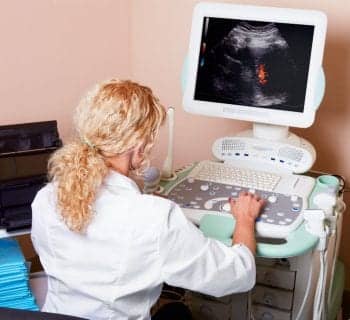Medical equipment use error has always been a problem that does not just affect hospital staff (physicians, nurses, biomedical engineers, etc), but also patient health and safety. The identification of use error begins with device manufacturers as they apply human factors engineering (HFE) to their processes. HFE provides information on how to optimize the use of medical devices by identifying and studying the process related to how humans interact with technology (devices, software, height, buttons, etc). The FDA requires manufacturers to study and identify the common errors that may be produced by the end user and try to resolve them before marketing. Some of the findings may involve misinterpreting device features—such as alarms or display warnings—and not being able to act accordingly, or even having difficulty following device prompts. As biomedical professionals, we must also play the role of investigators within our facility to try and do the same. This will not just reduce costs, but will also optimize the workflow in clinical engineering departments by reducing the number of use error work orders and, hence, save time. Here we will discuss common use errors and ways to reduce them in your facility.

To prevent use errors, it becomes very critical to inform the staff about the importance of caring for equipment.
As an example, a typical scenario could involve an understaffed biomedical department busy with various repairs, PMs, and installations. A work order comes in for an infusion pump that reads, “Keeps Alarming.” After spending 30 minutes doing an operational test (volumes, alarms, sensors, pressures, and electrical safety), the biomedical technician concludes that there was no problem found and returns the unit to service. The problems experienced may have occurred as a result of a manufacturer’s poor human factors design, or resulted from poor user training and operator errors. There are various issues that may lead to use errors in infusion pumps, some of which include alarm hazards—probably due to a low battery, incorrectly loading the tubing, air in the tubing line, or an occlusion pressure error arising from having the tubing kinked at the patient’s side. Providing adequate training to clinical staff on how to properly read the display for errors, check the tubing for any kinks, or check for displaced tubing could help save time and decrease the number of work orders—as well as provide biomedical staff the ability to focus on high-priority tasks.
As biomedical professionals, we have a duty to not just repair equipment and return it to service, but also to provide awareness and educational resources to hospital staff about use errors. Developing a list of the most common use errors at your facility and conducting awareness or training sessions with various departments will help reduce some of the most common problems, as well as build relationships with various departments and help you connect with staff members.
Preventing Errors
Preventing use errors at your facility should begin by having clinical engineering perform a thorough evaluation of equipment before it is purchased. The purpose of the evaluation is to perform simulations and test the usability of the device or software. Biomedical/clinical engineering departments also need to work in conjunction with the end users at the facility, such as nurses, to determine what will and will not work for the hospital. This initial evaluation will give you an opportunity to inspect and identify potential use errors that may arise. An example would be an infusion pump with a monotone alarm that will not help users distinguish between an occlusion alarm and a low battery alarm. Clinicians tend to silence alarms, but a device that provides the ability to distinguish the purpose of the alarm would enable the clinician to take the necessary action. Device evaluation prior to purchase must consist of reviewing medical device incident reports, recalls, and whether or not it meets HFE principles for use-centered design from the manufacturer.
After equipment purchase and installation, there should be an in-house training session to ensure the staff gain the skills necessary to operate the device. The training should involve providing end users with a daily equipment checklist that would help detect—as well as prevent—use errors from occurring. With respect to monitoring, this may involve checking EKG leads, patient prep before applying electrodes, cables, SpO2 sensors, and blood pressure connectors. Preoperative checklists could also be implemented in operating rooms to test the functionality of anesthesia machines to reduce failures. For example, if anesthesia machine operators (CRNAs and anesthesiologists) performed leak tests before initiating a procedure, this would help detect and resolve any leaks prior to using the device, as opposed to calling in a biomed during a procedure to troubleshoot and detect the leak, which may in turn jeopardize the patient.
Proactive Education
I have personally dealt with and seen several errors that could have been prevented with some awareness and proper care. Many devices, such as defibrillators, infusion pumps, and NIBP units, utilize batteries that are kept in service beyond an expected useful life. Keeping an actual label on the device indicating when the battery was changed would help ensure that a battery would be changed during a PM cycle. This could prevent future problems from arising as a result of users not plugging devices into the wall outlet, for example.
A common problem I have encountered on an electrosurgical unit involves a unit powering on but not functioning. The main use errors involved include having the dispersive electrode not making good contact with the patient, and also having the foot switch depressed upon powering on (which was usually confirmed by looking up error codes). Informing staff of safety features associated with the devices will help them understand and identify what they have to do to resolve the problems themselves while ensuring patient safety.
Other issues I have dealt with in the past involve air warmers. A safety feature on one manufacturer’s unit sets off an alarm once the unit detects a temperature exceeding the set limit. A common complaint received stated that the unit gave out cold air or it was alarming. A possible blockage of the distal end of the air hose as it entered the blanket could cause the thermal sensor to detect a rise in temperature beyond the set limit, causing the unit to go into safe mode, alarm, and stop producing warm air. Making clinicians aware of these safety features with communication and education would prevent using unnecessary maintenance resources.
Other use errors include abuse or using brute force while working with devices. Ultrasound transducers are commonly dropped and damaged. It becomes very critical to inform the staff about the importance of caring for equipment, and sometimes clinical engineering must take action and research solutions that will help reduce damage. For example, installing racks on the ultrasound unit would help stabilize the transducers and protect them from damage. Fetal dopplers are occasionally dropped and tend to break easily. Sometimes, the solution could cost a few dollars, such as purchasing a hard case for storing the doppler. This would help protect it during transportation and reduce the risk of breaking it if it is dropped.
Another device very prone to damage, the transesophageal echocardiogram (TEE) probe, tends to be dropped, mishandled, and improperly stored. Again, as biomedical professionals, we must provide users with the information and tools they need to help attain the expected life of their equipment. In this case, users should be cautioned to handle TEE probes with care and use manufacturers’ recommendations in terms of cleaning and enzymatic solutions utilized. Storage is an important factor in increasing the life of these probes. Instead of storing them in a drawer, these probes should be stored on a rack, hanging vertically, to help them dry properly. In addition, they should not be stored in closed containers to avoid condensation from building up.
Membrane switch pads or touch pads commonly encounter abuse. These touch pads serve multiple purposes, such as protecting the device. Most touch pads require a slightly increased pressure to be applied in order to activate a switch, which serves as a safety function to prevent inadvertent activation. Use errors on the membrane switch or touch pad include clinicians pressing buttons using sharp objects, which may lead to tearing of the protective cover. The ECRI Institute stated a scenario that occurred at one hospital, where the membrane switch panel on an electrosurgical unit was damaged because surgeons routinely used hemostats to reset the energy levels. The switches were riddled with puncture holes and lost the capability to set the energy levels. Fortunately, these switch failures did not cause the unit to operate in a hazardous manner. If the switch failures had resulted in intermittent contact, the set energy level might have spontaneously changed, leading to the use of inappropriate energy levels during a specific procedure and possible patient injury. A possible strategy to avoid these actions would be to check membrane switches visually and functionally during routine equipment inspections. In addition to repairing abused switches, bring this situation to the attention of users and determine why the abuse has occurred and how to avoid it.
Building Awareness
It is also very important for clinical engineering to educate those who use the devices about the hazards associated with devices that could potentially lead to a misdiagnosis or the triggering of an alarm. For example, informing users about the piezoelectric features of polyvinyl chloride (or PVC) in IV tubing and its effects on generating an artifact on an ECG. This occurs when electrodes pick up static electricity that is generated as a result of fluids constantly rubbing against the interior walls of the tubing.1 A study I read demonstrated how patient harm might occur as a result of static electricity. During a cardiopulmonary bypass surgery, medical staff noticed that a patient’s monitor had an EKG artifact that looked like an atrial flutter. They came to the conclusion that a loose electrode connection accentuated the static electricity contribution toward the artifact.2 Although not common—but possible—clinicians should be informed about such incidences to reduce patient harm as well as sources of static electricity, such as dry atmospheres, clothes, body surface, etc. During an EKG, the static electricity actually affects the differential amplifiers, leading to a reduction of the common mode rejection ratio, thus leading to spurious signals that could potentially be interpreted as serious arrhythmias.
Biomedical professionals have the expertise to help clinicians better understand the devices they use. Biomedical professionals can also provide techniques to retrain and educate end users about the proper care and maintenance of their equipment. The training—addressing potential problems and the consequences associated with misuse as well as abuse, as with membrane switch damage—could be provided during the in-service training programs for hospital staff. The benefits of training include improved user satisfaction, increased user productivity, reduced costs, and reduced use errors, which would contribute to improved clinical quality and patient safety.
Robert Hijazi, PhD, CBET, is a clinical engineer at Palmetto Health Hospital, Columbia, SC. For more information, contact .
References
- Warner D, Warner M. Equipment-related electrocardiographic artifacts: Causes, characteristics, consequences, and correction. Anesthesiology. 2008;108:138-148.
- Kleinman B, Shah K, Belusko R, Blakeman B. Electrocardiographic artifact caused by extracorporeal roller pump. J Clin Monit. 1990;6:258-259.





